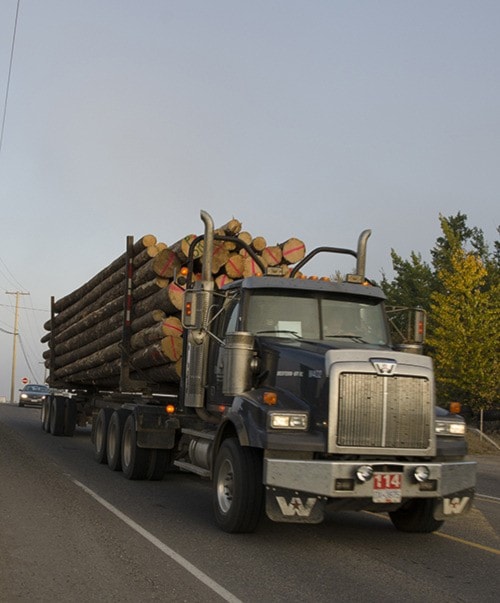Lumber prices have risen to a 19 month high in the wake of Hurricane Sandy of the east coast of the U.S., reports the Reuters News Service.
On Oct. 31 futures trading on U.S. lumber had increased to the daily maximum allowable before triggering an automatic cap on further trades. The market was responding the anticipated demand for building products in the follow up to the destruction on the U.S. east coast.
MaryAnne Arcand, Executive Director of the Central Interior Logging Association is raising the alarm that northern B.C. will not be in a position to meet the increase in demand that these higher lumber prices represent.
“We’re so short of trucks and equipment operators to meet current requirements that if there’s an increase in demand we won’t have the capacity on the ground to meet that demand,” said Arcand.
Logging contractors are generally under contract for their product so that market fluctuations aren’t always felt on the ground. Klaus Posselt, President of Tahtsa Timber in Burns Lake said that the market increase for lumber was still a good thing for local contractors as some pricing isn’t locked in to a contract rate.
Arcand has her ear to the ground in the forest industry and her association helps connect workers and contractors.
“Some of my contractors are saying that they’re only operating at 50 or 60 per cent usage of their trucks and equipment,” Arcand said.
To get their equipment running at full capacity and make money, she said that logging contractors are going outside of the province to bring in workers.
“I’ve got loggers in the region that are flying people in from New Brunswick and Nova Scotia every couple of weeks. I’ve got contractors in the area that are looking at bringing in foreign workers. They’re getting pretty desperate.”
Arcand guesses that forestry as an industry across the province is short at least 1000 to 1500 workers. It’s particularly challenging in North Central B.C. where mining and other resource projects compete for the same workers.
“Our guys already know how to work in the bush and in the long winter weather and how to run equipment and trucks,” Arcand said. “The mines poach them as fast as we can get them trained.”
Even though the unemployment rate in Northern B.C. is higher than in southern regions of the province, there is a shortage of labour for forest work. Arcand says that this shortage is taking a toll on the capacity of local industry to respond to local demand.
“I had one contractor phone me a couple of weeks ago to see if I knew anybody looking for work,” said Arcand.
“He’d been offered 100 km of road building, and that’s good money, but he had to turn it down because he didn’t have the people.”
